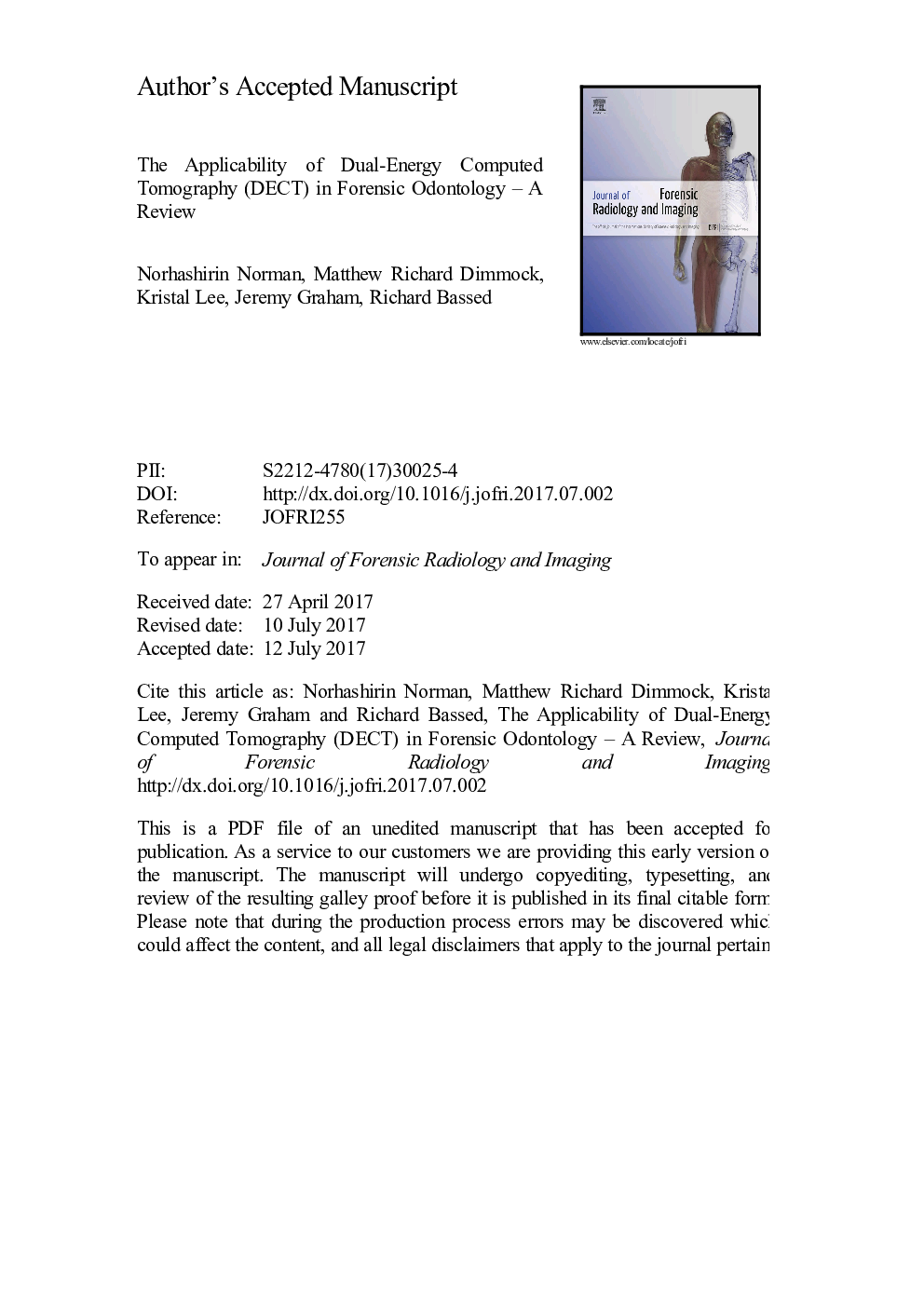| Article ID | Journal | Published Year | Pages | File Type |
|---|---|---|---|---|
| 4760786 | Journal of Forensic Radiology and Imaging | 2017 | 27 Pages |
Abstract
PMCT has been used routinely and validated for identification and age estimation due to its numerous reformatting capabilities and registration techniques. DECT-specific techniques including mono-energetic reconstructions, coupled with extended CT scale visualisation and the use of metal artefact reduction (MAR) software have been shown to overcome the limitations of metal artefact susceptibility in PMCT and enhance material differentiation in forensic odontology. Further benefits of DECT in forensic applications include improved soft-tissue visualisation, virtual bony subtraction and foreign body characterization. The literature supports the use of DECT in extending the benefits of PMCT for dental identification. Further systematic research is required to explore the use of DECT for material differentiation in forensic odontology.
Keywords
Related Topics
Health Sciences
Medicine and Dentistry
Forensic Medicine
Authors
Norhashirin Norman, Matthew Richard Dimmock, Kristal Lee, Jeremy Graham, Richard Bassed,
